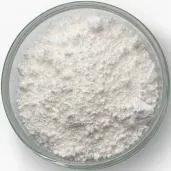
acidity regulator 296
Understanding Acidity Regulator E296 A Comprehensive Overview
In the food industry, the safety, taste, and shelf life of products hinge significantly on the use of various food additives. Among these, acidity regulators play a crucial role, helping to maintain the pH balance of food products, enhance flavors, and prolong shelf life. One such acidity regulator that has gained attention is E296, also known as malic acid.
What is E296 (Malic Acid)?
Malic acid is a naturally occurring organic compound primarily found in various fruits, particularly apples, which is where it derives its name. It is a dicarboxylic acid, a type of organic acid that features two carboxyl groups. In its crystallized form, malic acid is a white powder with a tart flavor, often associated with the sour taste of green apples. Although malic acid is naturally produced in the human body during metabolic processes, its industrial use as an acidity regulator and flavor enhancer has made it a popular ingredient in numerous food products.
Functions of E296 in Food Products
The primary function of E296 as an acidity regulator is to control the pH level of food items. By maintaining an optimal level of acidity, it can improve the taste profile of products, making them more palatable. Additionally, the right pH levels can inhibit the growth of harmful bacteria and spoilage organisms, thereby increasing the shelf life of foods. E296 is commonly utilized in beverages, confectionery, dairy products, and certain processed foods.
As a flavor enhancer, E296 amplifies the sour and tart notes in products, thereby enriching their overall taste. This function is particularly valuable in soft drinks, candies, and desserts, where a refreshing tartness can elevate the sensory experience for consumers.
acidity regulator 296

Safety and Regulatory Status
The safety of food additives, including E296, is a paramount concern for regulatory bodies worldwide. Malic acid has been evaluated by various health organizations, including the European Food Safety Authority (EFSA) and the U.S. Food and Drug Administration (FDA). These evaluations have confirmed that E296 is safe for consumption when used within specified limits.
In Europe, E296 is approved for use in food and is classified under the European Union's food additive regulations. Its Acceptable Daily Intake (ADI) has been established, reflecting the quantity that can be consumed daily over a lifetime without posing a risk to health. As a result, E296 is considered a safe ingredient within the food manufacturing industry.
Natural Versus Synthetic Malic Acid
While malic acid can be derived from natural sources, such as fruits, it is also produced synthetically for commercial use. Synthetic malic acid is often favored for its consistency and cost-effectiveness. However, consumers are increasingly looking for natural ingredients, driving manufacturers to incorporate natural malic acid in their products. This trend reflects a broader movement towards clean labels and transparency in food production.
Conclusion
E296, or malic acid, serves as an essential acidity regulator and flavor enhancer in the food industry. Its ability to maintain pH levels, enhance flavors, and prolong shelf life underscores its importance in various food products. With a robust safety record endorsed by regulatory agencies, malic acid continues to be a favored choice among manufacturers. As consumers become more health-conscious and demand cleaner ingredient profiles, the food industry will likely continue its adaptation to include more natural sources of E296, thus aligning with consumer preferences while maintaining product integrity. Whether through the zesty tartness of a candy or the refreshing kick in a beverage, E296 plays a vital role in shaping our food experiences.
-
The Safety Challenges of Ammonium Nitrate FertilizerNewsJun.26,2025
-
The Critical Role of Mining ChemicalsNewsJun.26,2025
-
Shelf Life of Glacial Acetic Acid Food GradeNewsJun.26,2025
-
Enhancing PVC Longevity with 1,2,3-Benzotriazole InnovationsNewsJun.26,2025
-
China’s Dominance in Food Additive ProductionNewsJun.26,2025
-
Can Aluminum Hydroxide Replace More Toxic Alternatives?NewsJun.26,2025
-
PE and PP Plastics with Benzotriazole AdditivesNewsJun.12,2025
Hebei Tenger Chemical Technology Co., Ltd. focuses on the chemical industry and is committed to the export service of chemical raw materials.
-

view more DiethanolisopropanolamineIn the ever-growing field of chemical solutions, diethanolisopropanolamine (DEIPA) stands out as a versatile and important compound. Due to its unique chemical structure and properties, DEIPA is of interest to various industries including construction, personal care, and agriculture. -

view more TriisopropanolamineTriisopropanolamine (TIPA) alkanol amine substance, is a kind of alcohol amine compound with amino and alcohol hydroxyl, and because of its molecules contains both amino and hydroxyl. -

view more Tetramethyl Thiuram DisulfideTetramethyl thiuram disulfide, also known as TMTD, is a white to light-yellow powder with a distinct sulfur-like odor. It is soluble in organic solvents such as benzene, acetone, and ethyl acetate, making it highly versatile for use in different formulations. TMTD is known for its excellent vulcanization acceleration properties, which makes it a key ingredient in the production of rubber products. Additionally, it acts as an effective fungicide and bactericide, making it valuable in agricultural applications. Its high purity and stability ensure consistent performance, making it a preferred choice for manufacturers across various industries.











